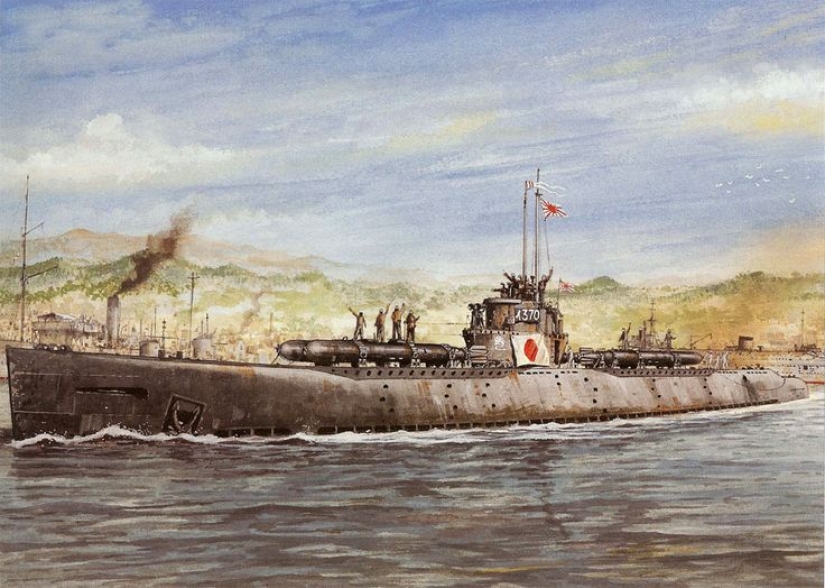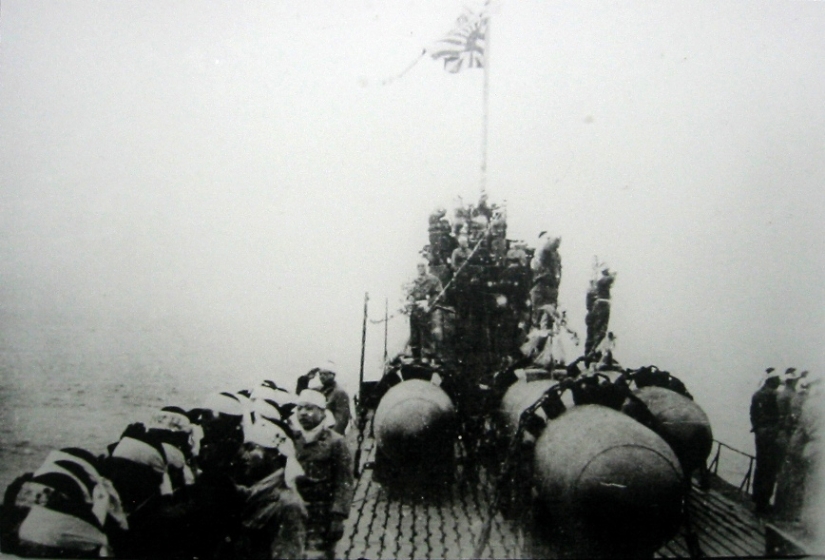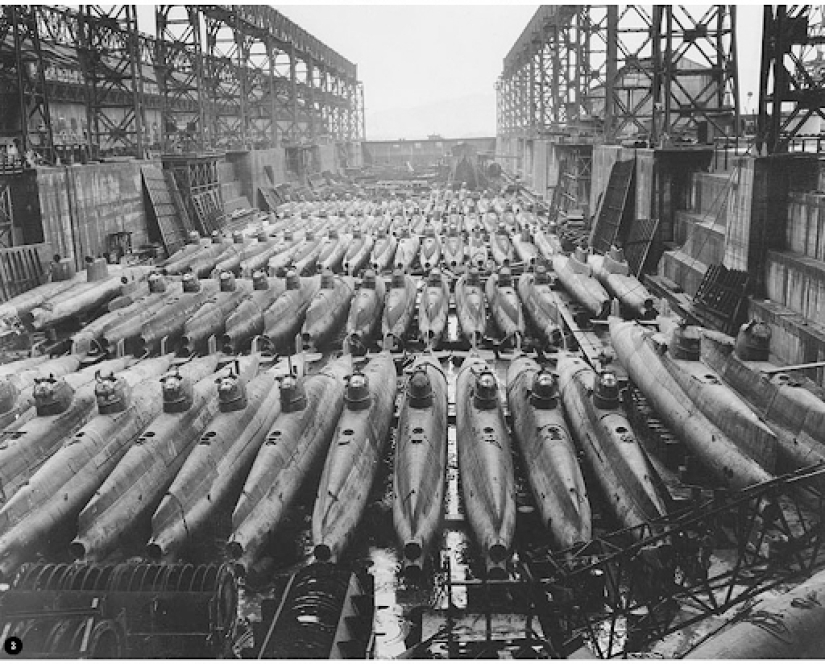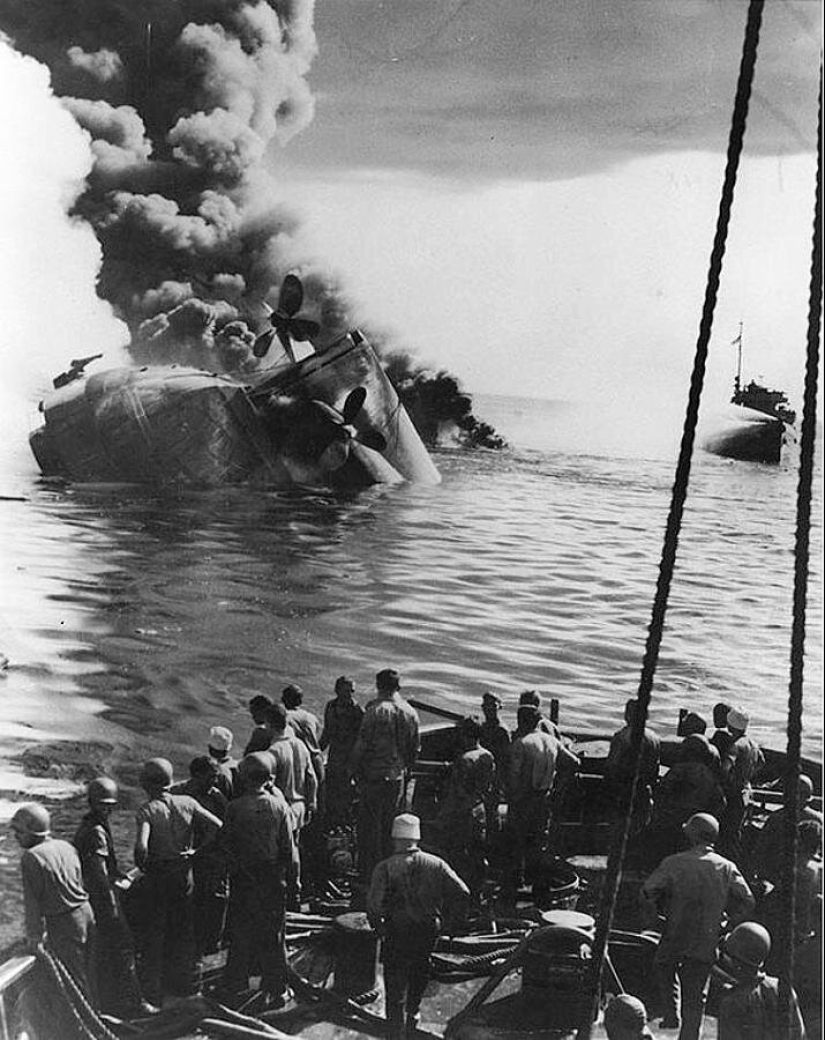Kaiten: how the Japanese torpedo people appeared, and why so little is known about them
The whole world knows about Japanese kamikaze suicide pilots. This word has even become a household word for people who are careless about their lives. But few people have heard of the kaiten torpedo people. How did submarine pilots, who had even less chance of survival than their aviation colleagues, fight?

For the Japanese, the idea of self-sacrifice for the glory of the country and the emperor during World War II became national. When the army, air force and navy began to form teishintai suicide squads, there was no end to those interested. Among the brave warriors who swore to die for the sake of the emperor and Japan, the most famous were kamikaze pilots. But the navy also had its heroes.

Using human-controlled kaiten ("Destiny Changing") torpedoes, the Japanese tried to turn the tide at sea. The impetus for the appearance of this type of weapon was the defeat of the imperial fleet near Midway Atoll. In this large-scale battle, the Japanese lost their best aircraft carriers and the lion's share of naval aviation. It became clear that the initiative in the Pacific had passed into American hands.
The Land of the Rising Sun had no choice but to go on the defensive. But the military-industrial potential of the United States was much higher than that of Japan, and this did not bode well. Only a non-standard solution could save the situation, and it was found. Two submarine lieutenants, Sekio Nishina and Hiroshi Kuroki, came up with a human-controlled torpedo.
This wasn't an entirely new idea. Even at Pearl Harbor, Japan used mini-submarines. But the crews of these ships had at least a small chance of survival. The pilot of a heavy torpedo did not have such an opportunity. The command was interested in the idea of the young lieutenants and they were given the go-ahead to develop it. Since the submariners had no experience in design work, they turned to specialists.

The third in the development team was shipbuilding company engineer Hiroshi Suzukawa. In just a few months, work on the project was completed and in January 1943 the finished set of drawings was transferred to the Navy Ministry. But, to the surprise of the authors, their work there did not impress anyone. High naval officials were simply tired of daily innovative proposals and put the kaiten drawings on the table.
Nishine and Kuroki hinted that they would be better off focusing on their service and leaving the development of new weapons to the military institutes. But the lieutenants were not going to retreat. They say that they wrote a long letter to the minister with their own blood and thereby won his favor. In high offices they appreciated the project, praised its creators and... still refused.
Human-controlled torpedoes were remembered later, when things got really bad for Japan. At the end of winter 1944, the first kaiten began to be assembled at military factories. The standard heavy torpedo “Type 93” was taken as the basis. True, in the original version the device was equipped with a catapult, which gave the pilot a small chance of salvation.

But soon the catapult was abandoned. Firstly, it significantly complicated the design of the torpedo. And secondly, it is difficult to imagine that someone will look for a submariner who survived after being torpedoed, risking the entire ship. In July 1944, the first kaiten were delivered to the fleet. It was obvious that this was a very “raw” technique, but there was no time for improvement.
By this point, the Japanese had suffered another crushing defeat in the naval battle of the Philippine Islands. This forced manufacturers to hurry up. The original plans were to produce 7 types of guided torpedoes. But only the most primitive “Type 1” went into production. It was a torpedo with a diameter of 1 meter with an explosive charge of 1550 kg in the bow. This was enough to cause critical damage to any ship.

The total length of the apparatus was 14.75 meters. The torpedo could dive and emerge using compressed air tanks. The small pilot's cabin contained a control wheel, a minimal set of instruments and a periscope for observation. Kaiten was equipped with three fuses at once. The first is a contact type, triggered when a torpedo hits an obstacle. The second electric one was controlled by the pilot. The third was intended to self-destruct the ammunition in the event of an unsuccessful attack.
The torpedoes were too large to fit into the torpedo tubes. Therefore, they were attached to the submarines from the outside. The pilot entered the kaiten through a special transition gateway. One submarine could carry 4 kaiten. They also came up with a way to attach torpedoes to surface ships. But in practice this solution was used very rarely.
There was also an idea to create ground-based kaiten bases that could protect the country's coast. But this plan was not realized in time. The war was rapidly moving towards its end, and the Japanese were no longer in the mood for innovation. In the summer of 1944, kaitens were used in combat for the first time.

When the submarine captain spotted a target, he gave the order to prepare the kaiten. The pilot went through the airlock into the torpedo, and the hatch was battened down behind him. The boat turned its nose towards the target and the torpedo was disconnected. The pilot started the vehicle's engine and then acted completely autonomously. Kaiten walked underwater at a shallow depth, rarely exceeding 2-3 meters.
The pilot could monitor the course through a small periscope. But this opportunity was used very rarely. To track the target, it was necessary to go at a minimum depth. The Americans noticed the Kaiten and shot it with heavy machine guns.
In general, despite their menacing appearance, suicide-guided torpedoes showed low effectiveness. In total, about 300 torpedoes were produced, but only 100 were used in battle. One of the creators of the weapon, Lieutenant Kuroki, died during a training trip to sea.

His partner Nishina announced his desire to make the first kaiten attack in history. On his last voyage, he took with him an urn containing the ashes of his comrade. There are many legends about the results of the first use of a suicide-guided torpedo. But there is no reliable data about the successful strike in the archives of the Japanese navy.
To summarize, we can say that although the kaiten have several sunk and damaged ships, the game was not worth the candle. The torpedoes did more damage to the Japanese fleet than to the enemy. A lot of money was invested in the creation of new weapons. In addition, professional submariners, of whom there was a catastrophic shortage, died in not very successful torpedo attacks.

Since the project was unsuccessful, people in Japan did not like to talk about it. Therefore, we know well about kamikaze pilots, but have heard almost nothing about human torpedoes.
Recent articles

Soon the New year, which means it's time to review Christmas movies, buying gifts, planning the celebration and decorate their ...

An old tradition to eat alcohol, kebabs, sausages and other meat products obviously there for a reason. Our ancestors, having a ...

Artists perpetuate the images of his muses in paintings, sculptures and other works. Them they draw inspiration for creativity. ...